Plants of spring flower beds: types and names
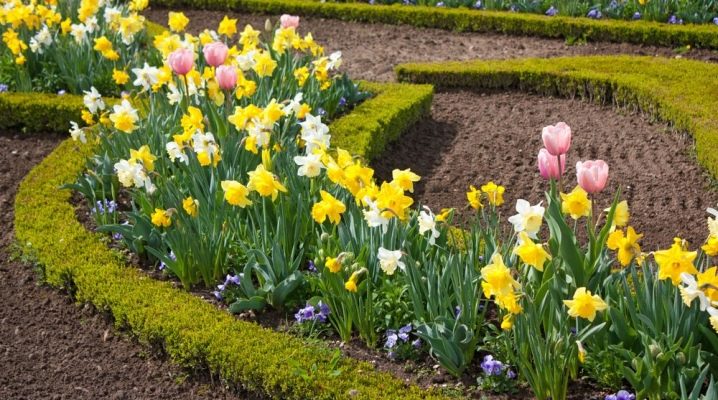
Flowers, as a symbol of beauty, are loved all over the world. Legends, poems and songs have been written about them since ancient times. With the help of flowers, you can express your emotions and feelings. For example, a rose is considered a symbol of love, a carnation is a symbol of fidelity, and a forget-me-not is the memory of a loved one. Many other flowers are symbols of human feelings.
In this article, we will talk about spring plants for flower arrangements.
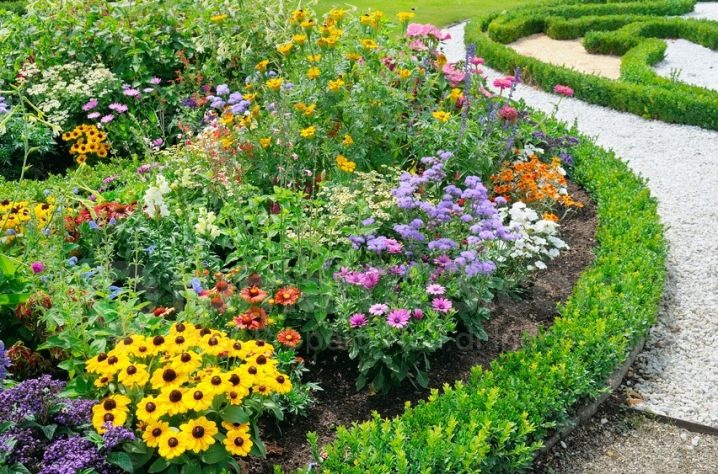
Views
Plants blooming in spring are classified as herbaceous perennials in terms of their structure and properties. According to their shape, they are divided into rhizome, bulbous, bulbous and bush.
Rhizome and bush perennials form flower shoots in autumn. Next year, in the spring, after a short growth, they bloom. They are propagated using seeds, cuttings, rhizomes are divided.
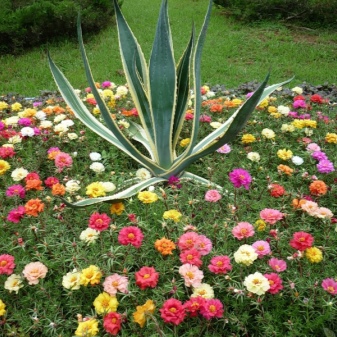
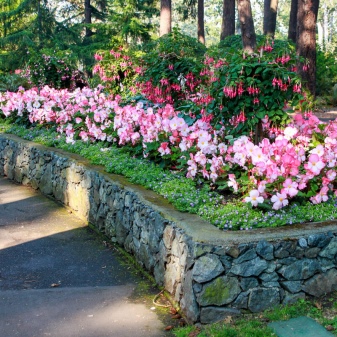
Corms each year form new organs (both underground and aboveground). At the top of the old corm, a daughter corm grows from the thick lower parts of the leaves. In the year of flowering of the mother plant, the rudiments of flowers are laid.
Bulbous plants are usually ephemeroids. For a short spring period, they manage to form leaves and bloom. Then, by the middle of summer, their aboveground part disappears, and the bulb remains in the ground and inflorescences are laid in it for the next year.
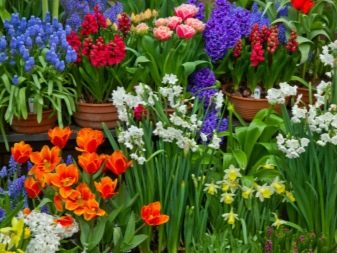
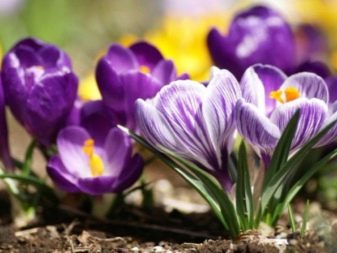
Perennial spring plants form new aerial shoots every year, and flowers and leaves emerge from renewal buds. Only underground organs remain for them to winter.
Spring flowers have good cold resistance. Some of the bulbous plants begin to bloom as soon as the snow melts, at low temperatures above zero.
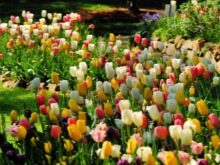
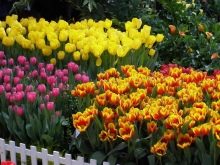

What flowers are more common?
Here are the names and a short description of some spring plants.
Crown anemone - a plant native to southern Europe, Asia Minor and Africa. It is a perennial herbaceous bulbous plant. Her flowers are very beautiful, large, can be both simple and double. The color of the flowers is different, the flower size is 7 cm. Propagated by sowing seeds in the ground or dividing the tubers. Loamy, fertile soils with good water permeability. The plant needs to be covered for the winter or the tubers must be dug out after the end of the growing season. The dug up tubers are stored at a temperature of about 4 degrees.
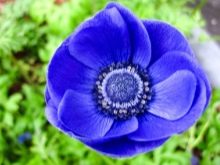

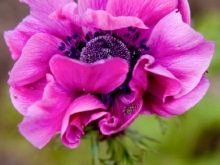
Alpine aster - a plant from America, Eurasia and Africa. It is a perennial rhizome plant with a height of about 30 cm. It forms a low, abundantly flowering dense bush. The flowers are purple, pink, carmine, white. Flowering lasts from late May to mid-June. Propagated by sowing seeds, cuttings or dividing rhizomes. Grows in places open to the sun, loves fertile soil, loamy.


Periwinkle originally from Western and Southwest Europe. It is a perennial plant with shoots up to one meter long. It blooms in May with small flowers of a pale blue color. Periwinkle grows in a flat, green carpet that hibernates under the snow.
The plant propagates by spring division of shoots. Periwinkle is frost-hardy, loves partial shade, grows on light, well-fertilized soils, does not like waterlogging.


Spring white flower - a plant from Central Europe. It is a perennial bulbous plant with a height of about 30 cm. Flowering occurs in April in the form of broad-bell-shaped flowers, at the ends of their petals there are white or yellow spots.The plant has a delicate aroma.
Propagated by seeds and young daughter bulbs. Grows on fertile, permeable soils. White flower is hygrophilous, grows in lowlands near reservoirs, in partial shade.
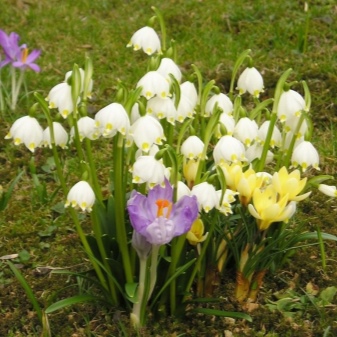
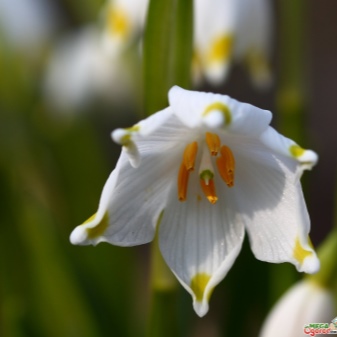
Aquilegia originally from Europe, Asia and America. The height of this perennial plant is up to 40 cm. It blooms in May, flowers have different colors. Propagated by seeds, cuttings and dividing the bush. Aquilegia are frost-hardy, they love moisture, they grow well in semi-shady places on any soil.
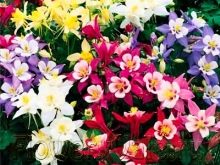
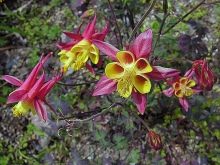
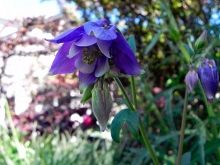
Pinnate carnation - origin from Europe, Asia and America. It is a soddy-herbaceous rhizomatous low plant. It blooms with single fragrant flowers of white or red color. Has fringed petals. Flowering begins in mid-May. Propagated by seeds and cuttings. Loves bright and sun-exposed places. Prefers loamy, fertile soils. The plant is cold-resistant.
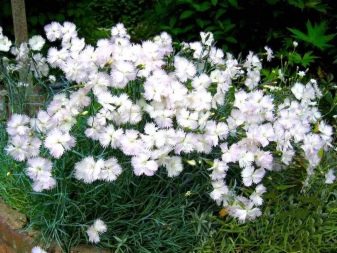
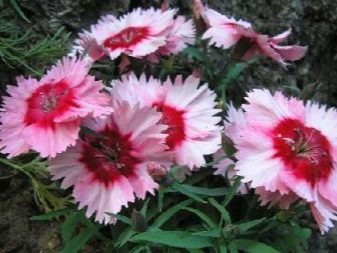
Oriental hyacinth originally from Iran, Asia and the Mediterranean. Perennial bulbous plant up to 30 cm high. On the peduncle there are bell-shaped flowers of various colors, simple or double. The plant is very aromatic. Propagated by children and bulb scales. Hyacinths prefer light sandy loam soils with the introduction of humus. They are planted in sunny places protected from the wind. They are relatively hardy, but in very cold winters they can freeze slightly.
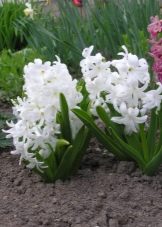
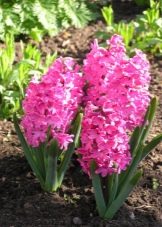
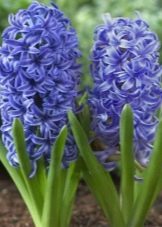

Dicenter origin from North America. Herbaceous plant up to 30 cm high. Flowers can be pink or white, they are located in short inflorescences. Flowering begins in May. Propagated by spring division of bushes or by green cuttings in summer. The plant is winter-hardy, grows on nutritious, loose soils. Does not tolerate dry soils, shade-tolerant.
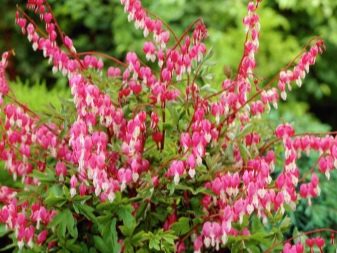
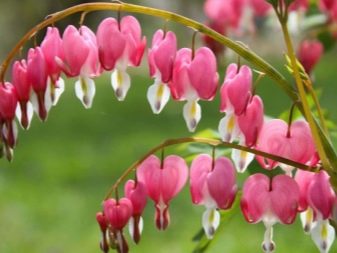
Doronicum Is a popular early flowering plant. It blooms in May with bright, glowing yellow flowers. The soil is suitable for him loose, clayey with the addition of organic fertilizers. Grows in light and semi-shady places.
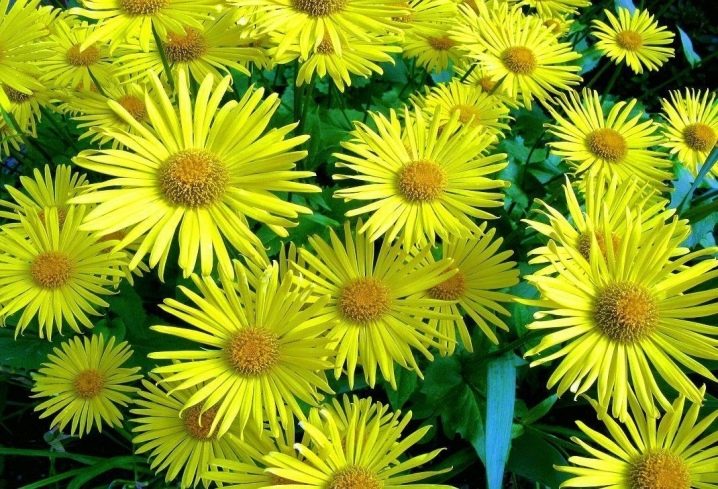
Iberis - an irreplaceable shrub for rocky gardens. Its white flowers are collected in a dense umbrella. It grows widely, forming a dense carpet, blooms in May-June. It grows in a sunny warm place. The soil for it should be dry, permeable, with a small amount of humus. Propagated by cuttings, rooted shoots, seeds.


Dwarf iris originally from the south of Europe. Perennial rhizome plant with peduncles up to 15 cm high. It blooms in early May with yellow or blue single flowers. Propagated by sowing seeds or dividing rhizomes.
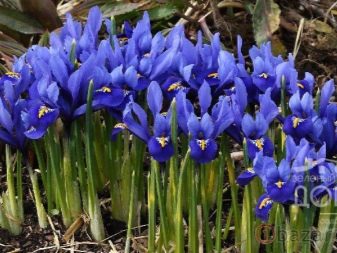

Crocus originally from Central Europe, Asia, Mediterranean, Crimea, Caucasus. An original corm perennial up to 17 cm high. The flower appears even before the formation of leaves from the corm. Usually, one or two flowers appear on one plant, white, purple, orange or yellow, funnel-shaped and 2.5 cm long. It blooms in April. Propagated by corms or seeds. Prefers sunny locations and light nutritious soils.
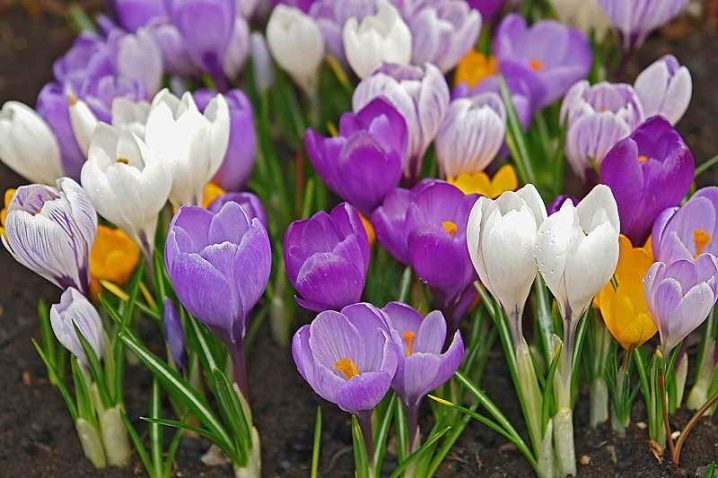
Swimsuit - an unusually beautiful plant. She has bright yellow spherical flowers on strong peduncles. The bather has a delicate scent. Blooms from late May to June. Grows in a semi-shady, cool place. The soil requires moist, nutrient-rich.
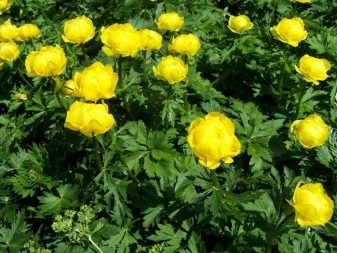
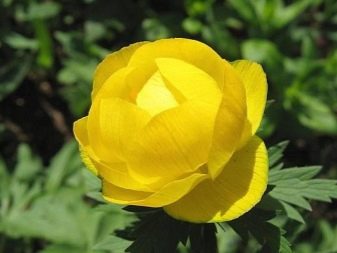
May lily of the valley originally from Eurasia. It is a perennial rhizome plant. It blooms in May with drooping small white flowers. Lily of the valley is a very fragrant plant. Propagated by dividing rhizomes in late summer or early spring. Grows well in the shade of shrubs on well-fertilized, light and moist soil.
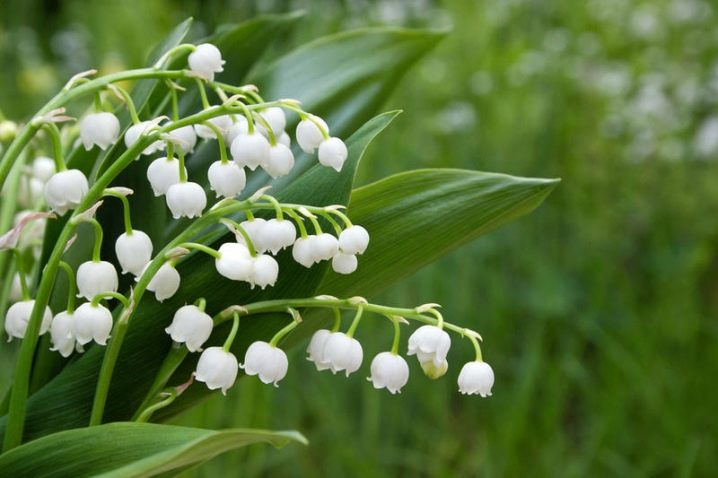
Lungwort - a herbaceous plant up to 30 cm tall, recommended for creating a cover under trees, shrubs and in shaded parts of the garden. It blooms in April-May with lilac-blue flowers. Prefers loose soils with humus content.
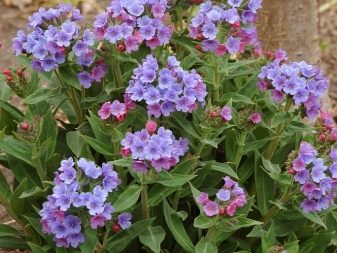
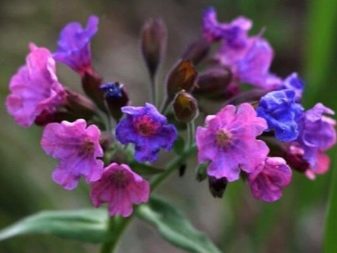
Hellebore - delicate spring flowers that reveal their white, pink or red flowers immediately after the snow melts. It forms a lush bush up to 40 cm tall and grows in one place for many years. It is grown in a semi-shady and cool place. The soil is needed fresh, rich in humus, clayey, neutral.
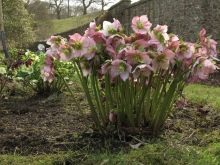
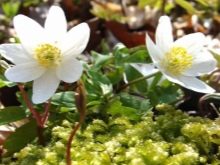
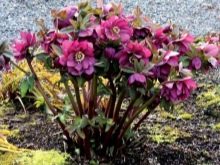
Narcissus native to southern Europe and the Mediterranean. It is a perennial bulbous plant up to 50 cm high. The flowers are mainly white and yellow. Flowers can be either simple or double. Has a strong aroma. Propagated by dividing the bulbs. Prefers places open to the sun and breathable soils with a neutral reaction.
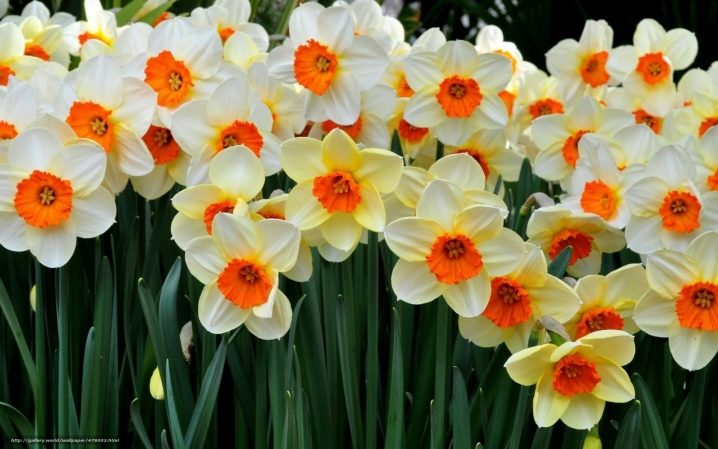
Grouse imperial originally from Asia. Perennial bulbous plant up to one meter high. The flowers are bell-shaped, drooping, forming an umbellate inflorescence. A bunch of leaves is located above the inflorescence. The perianth is available in yellow, orange and brick tones. Blooms in May. Propagated by sowing seeds in the ground and bulbs. Grows on light, moist and fertile soils in partial shade in a place protected from cold winds.
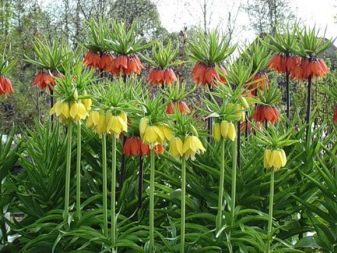
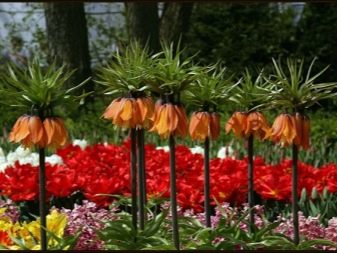
Tulip - its wild forms are common in Central Asia. It is a bulbous plant with an erect stem, on which there are large beautiful flowers of bright colors, they are also white. According to their shapes, tulips are divided into lily, goblet, cup-shaped and others. They are terry or simple.
Tulips are propagated by seeds or bulbs. Grown in well-lit sunny places protected from the wind. Prefers sandy or loamy light soils, sufficiently moist.
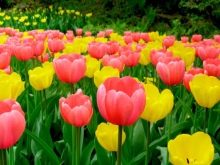
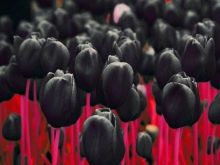

Horned violet or viola origin from Europe. It is a perennial herb up to 30 cm high. The flowers are bright or white, bloom in May. Propagated by seed or cuttings. Grows in well-fertilized soils.
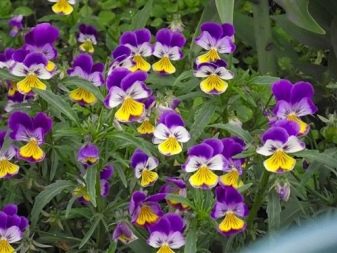
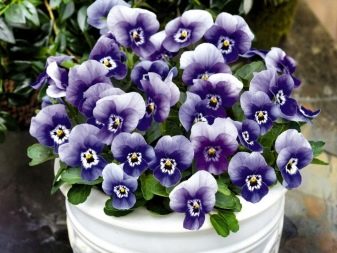
Varieties of flower beds
- Flower garden border in the form of a line 10-30 cm wide from one or more rows of flowers - a common design option for a flower bed. Low compact flowering plants are suitable for such a flower garden. It is used to give clarity to ridges, mixborders, groups, flower beds, etc.
- Rabatka - a strip 50-100 cm wide, completely planted with flowers. Such a flower garden is made in the form of a certain pattern with alternating colors in appearance and color. They are located along paths, fences, reservoirs.
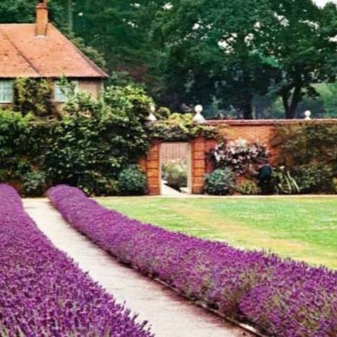
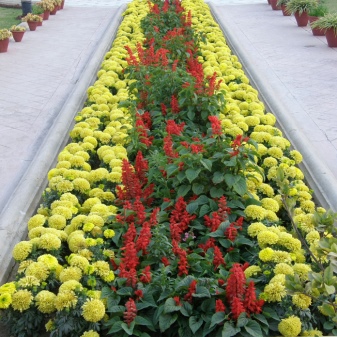
- Tapeworm - free standing plants. Tall plants-accents (peonies, hazel grouses, dicenters) are used for specimen plantings. Spectacular tapeworms accentuate other, lower plants, create volume. Solitary tapeworms look great on green lawns.
- Group - free picturesque planting of flowers on an area of two to thirty square meters. Such landings are placed inside the designated area. The contours of the group are made sinuous. Groups can be simple (from one plant species) or complex (from several).
Groups are placed in the foreground near paths, reservoirs, in front of bushes, along walls. For groups, plants that retain decorativeness for a long time are suitable.
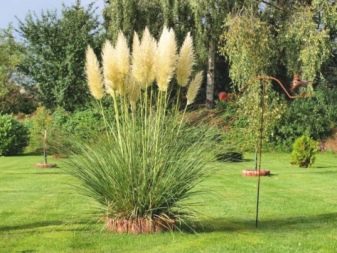

- Flower bed - a plot of regular shape, planted with ornamental plants. Most often, flower beds are made in parks, in front of administrative buildings, in city squares. A flower bed can be from one type of plant, or several.
- Mixborder - mixed discount. It is a picturesque strip 2-4 m wide, filled with decorative deciduous and flowering plants, located in spots or geometric patterns. The mixborder can be of irregular oblique shape.
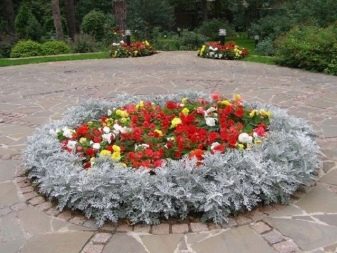
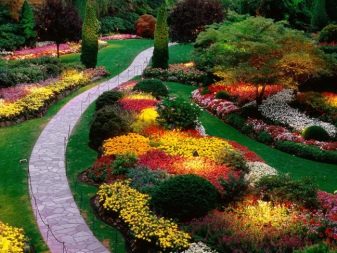
How to register?
Rockery can serve as one of the design options for a flower garden. It is a small plot of about 5-6 sq. m, where ornamental plants are planted among the stones. This is an interesting design option for suburban and suburban areas, gardens and parks.
Rockeries will look especially good with natural uneven terrain. Depending on the location on such flower beds, both sun-loving plants (sedum, styloid phlox, armeria, irises, primroses, obriety, dicenter) and shade-tolerant plants (kupen, aquilegia, etc.) are planted.
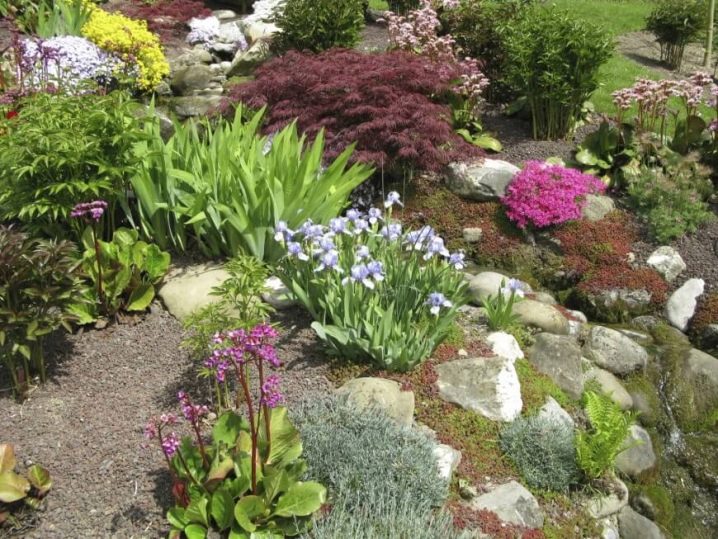
Springarium - a small cheerful garden with spring bulbs, corms and rhizome plants. Snowdrops are the earliest of all to grow on the islands open to the sun, followed by crocuses, scillas, corydalis and chionodox. Then come muscari, hyacinths, daffodils and tulips. Even later, subulate phlox, aubrieta, liverwort, viola, forget-me-not and daisy bloom.
Alpine slide - an area set aside for mountain plants. On such a site, paths are arranged, terraces and stairs are made. The elements of equipment can be stones, reservoirs with waterfalls, streams. Plants grown on alpine slides are considered unpretentious. The following spring plants are recommended for the rock garden: subulate phlox, periwinkle, aubrieta, gentian, etc.
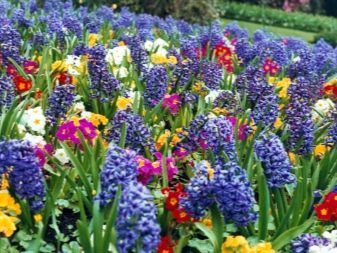
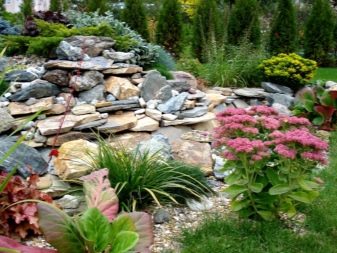
Care rules
Even the most unpretentious flowers need care. Its main elements are:
- Landing differs for each type of plant, but there are general rules:
- should not be planted in too hot, sunny and windy weather;
- you can not plant plants in too wet soil;
- seedlings of annuals are planted after the threat of frost;
- biennials are planted in early autumn;
- bulbs and tubers are usually planted to a depth of 3 times their size.
- Mulching - covering the soil with a layer of bulk organic material. This measure allows you to preserve moisture under the mulch layer, reduce the growth of weeds, fertilize the soil and protect it from freezing in winter.
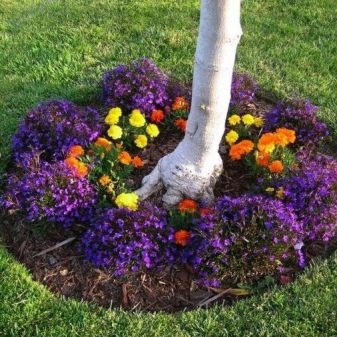
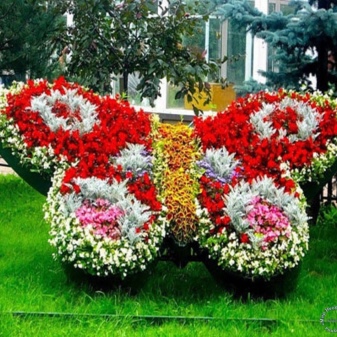
- Watering required by each plant, but to a different degree. Preferably use rainwater from a watering can or a spray hose. Do not use cold water. The best time to water is early morning or evening. For deeper soil moistening, it is better to water once abundantly than often little by little.
- Pruning performed individually for each type. If you want to prolong flowering, then remove faded flowers.
- Winter protection - covering plants with covering material, spruce branches, dry foliage. Shelter should be carried out when setting stable weather with slight negative temperatures.
- Top dressing - adding substances necessary for plant nutrition to the soil. For feeding perennials, organic fertilizers (cow and horse manure, humus, compost) and mineral (nitrogen, phosphorus and potash) fertilizers are most often used. Mineral fertilizers should be applied in accordance with the directions on the package. Excessive amounts of mineral fertilizers can weaken plants. For each type of plant, feeding is carried out individually.
- Plant protection from diseases and pests.
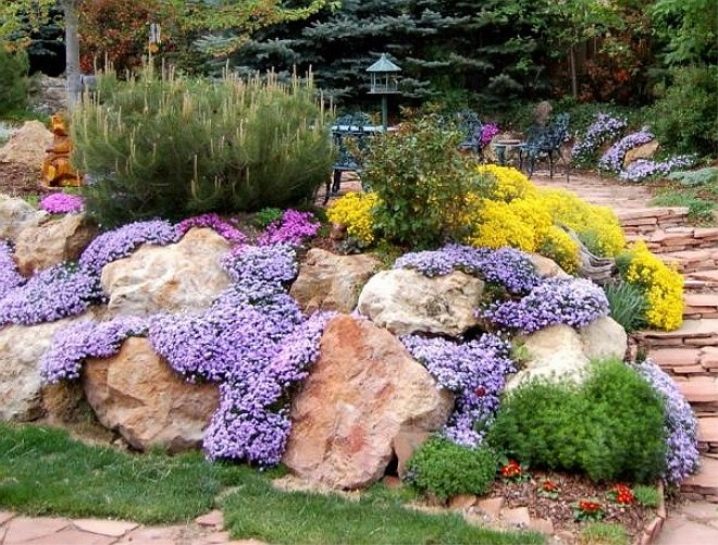
Decorating a flower garden is a very exciting activity that brings a lot of positive emotions. We hope that our article helped you decide on the choice of plants for your spring flower bed.
You can learn how to create a flower garden taking into account the rules of landscape design by watching the following video.







































































































The comment was sent successfully.